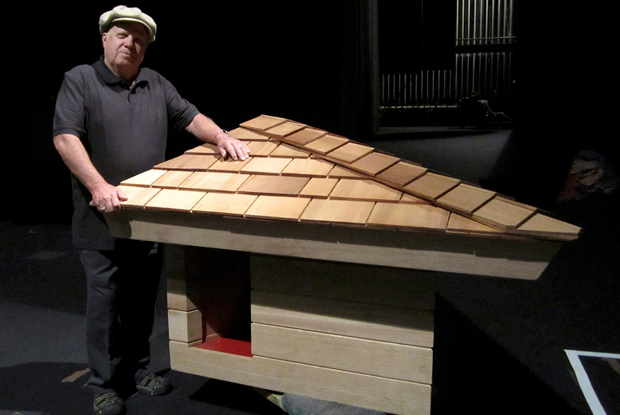
Frank Lloyd Wright in the doghouse
One of the legendary architect's most unusual (and secret) commissions has been recreated for new documentary
Leaf through our handful of lovely books on Frank Lloyd Wright and you'll find numerous examples of the famed American architect's sheer breathtaking brilliance - among them the Solomon R. Guggenheim Museum, Fallingwater and so on and so on.
However, as exhaustive as our tomes tend to be on the subject of this particular genius, there's one design created by Wright that's missing. We won't apologise, as knowlege of its existence has, until now, been pretty much confined to a single family in the United States.
Back in 1956, Frank Lloyd Wright indulged a young boy's request that he design him a dog house for his black labrador, Eddie. "I was probably his youngest and poorest client," Jim Berger, now 68, says. Berger recently rebuilt the doghouse with his brother, using Wright's original plans for a documentary film, Romanza, currently previewing at film festivals.
The commission came about after Wright designed Berger's family's home in San Anselmo, Marin County. "I would appreciate it if you would design me a doghouse, which would be easy to build, but would go with our house ...," read the June 19, 1956 letter the young boy sent to the famous architect. "(My dog) is two and a half feet high and three feet long" it continued. "The reasons I would like this doghouse is for the winters mainly." In a further nice touch, the young boy told Wright he would pay him from the proceeds from his paper route.
"A house for Eddie is an opportunity," the famous architect duly wrote back, apologising that he was busy at that moment - Wright was engaged on working on the Guggenheim at the time! - but asking Berger write to him again in November. The boy did and the rest became (relatively untold) history.
"I just knew it was a great story," Michael Miner, Dallas-based producer and director of the forthcoming Wright documentary, "Romanza," told the AP. The original house was long gone so Jim got hold of Wright's plans and built the new version from mahogany. His original letter had asked that the structure be easy to build. Jim, now a cabinet maker, says it turned out to be anything but; saying in fact, "it was a nightmare".